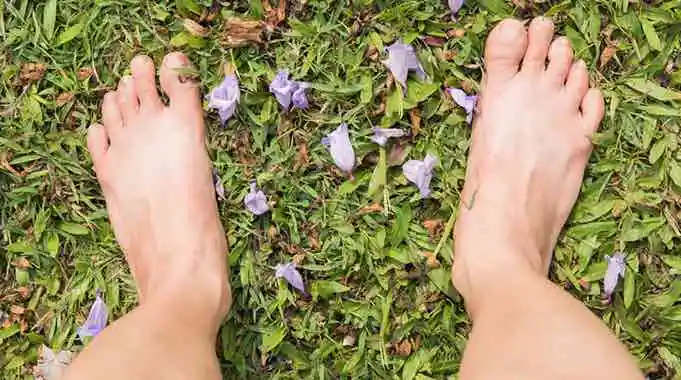Earthing therapy, also known as “grounding,” means engaging in activities that “ground” or electrically link you to the earth. As we already know, earthing helps keep voltage stable and protects against too much voltage. Electric current can cause death, property damage, and injury. It aids in reducing the possibility of fire in electrical installation systems.
What is Earthing Therapy?
Here’s how to practice earthing. “Earthing” or “Grounding Therapy” means that you have to stand or walk on the earth without wearing any slippers or shoes. Direct contact between your body and the earth’s soil is required so that extra charge can pass to the earth. This therapy stabilizes the human physiology at all levels, reduces pain, inflammation, and stress. It also helps improve blood flow, energy, and sleep. There are many earthing benefits but these are some of the best benefits of grounding or earthing therapy.
Whenever we feel depressed or fall sick, then that means there is some extra bad charge or energy in our body that we need to pass somewhere, just as an electrical pole does, where a long wire is always passed to the earth.

This technique draws on grounding physics and earthing science to explain how electrical charges from the earth may have advantageous impacts on your health. The approach employed in mental health treatment differs slightly from this kind of grounding therapy.
In case you are not so available or can’t do earthing practice, then you simply put a copper wire into the earth around 1 foot deep and take that wire to your room. Wherever you take a rest at home, just cover your leg with that copper wire for at least 30 minutes. It will make you feel relaxed and better. It will also heal you from disease by passing bad energy to the earth.
Also Read: Top 5 mistakes after knee replacement
The theory of grounding energy, the advantages and disadvantages of adopting earthing procedures, and practical grounding techniques are all covered in this article.
The Science behind Earthing Therapy
There are presently not enough studies on the advantages of grounding, and those that exist are few. The most recent scientific studies, however, have looked at the causes of inflammatory illnesses, cardiovascular disease, muscular damage, chronic pain, and mental disorders.
Also Read:
- Which one is better: An analysis of Almonds vs Peanuts
- Here are some daily tips for a better lifestyle
The main thesis of a review study
According to a reliable source, grounding has an impact on the living matrix, which serves as the main link between living cells.
The matrix contains electrical conductivity that, like antioxidants, serves as immune system protection. They contend that restoring the body’s natural defenses through grounding is possible. This concept is developed in further study.
Red blood cell fluidity, which is related to heart health, was measured in the blood before and after grounding to look for any changes. The results showed that red blood cells didn’t stick together as much after grounding, which could be good for heart health.
A Research Report on Earthing Therapy
The impact of grounding on post-exercise muscle injury was investigated by a reputable source. Researchers examined creatine kinase, white blood cell count, and pain levels before and after using grounding mats and patches.
Blood tests showed that grounding helped subjects experience less discomfort and muscle deterioration. This shows that grounding may affect a person’s capacity for recovery.
A new study on the benefits of grounding for pain relief and mood enhancement supports this research. Sixteen massage therapists alternated periods of grounding and no grounding.
Before they started doing grounding therapy, their physically demanding jobs often caused mental and physical pain and stress. Following the grounding therapy, participants reported feeling less pain, tension, despair, and weariness.
Most research on grounding is small and partly based on subjective measures like self-reported emotions, mood, or even self-administered therapy.
Several studies have also used blood markers to find out if there is inflammation. However, given the size and number of these studies, more research is needed.



